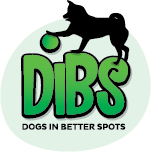Leash Reactivity in Dogs & You!
With leash-reactivity, the common denominator is a dog who feels trapped while on a leash attached to a human. That usually points toward an unsure or tense handler.
Check to see if YOU are leash reactive! We don’t mean that you are barking at every dog that walks by, but your anticipation of the possible reaction can actually reinforce the dog’s bad behaviour. Have a little chat with yourself to see if any of the following applies to you
Be aware of Yourself and Your Energy at all times
- Are you nervous? Tense? Confident? Frustrated? What do you feel?
- Are you accidentally reinforcing behaviour that you don’t want by giving affection at the wrong time or missing a correction?
- Are you negotiating with your dog rather than guiding him or her?
- Are you keeping the leash loose and your body relaxed? Are you talking too much?
We are always communicating with our dogs, whether we are aware of the feedback we are providing. Be careful of the message you are sending through the leash.
Starting off right: Thresholds
Before starting on a walk, practice a calm state with your dog. Your goal is to have the dog exit every threshold calmly and patiently on command, such as Let’s Go. Always keep the leash loose unless correcting or blocking a dog from exiting ahead of release.
Practice: It’s very important to take time at this and to be consistent: this can be practised in the home with stairs, moving from room to room, etc.
This approach starts the walk in the right state of mind. Our trainer has seen consistent patterns with leash-reactivity happening after a dog has bolted out of any threshold in excitement and/or anxiety. That amount of energy just gets pent-up and explodes upon the sight of other dogs or stimuli. By starting calm, the handler becomes the number one focus right away and the dog can control themselves much better.
Be Mindful of the Leash
The final step is to keep the leash loose 90% of the time and use the 10% as a way to send ‘messages’ to your dog through the leash… by a leash pop correction or gentle pressure for guidance. The best time to catch the reactive dog is before the reaction happens.
Watch for small signs of alert behaviour: perky ears, wrinkly foreheads, high tails, hackles, and darting eyes. Keep the dog in a calm state and they won’t be able to accelerate into higher levels of excitement and anxiety.
The emergency brake is to pull upwards on the leash and hold on to the pressure until the dog relaxes. We highly recommend using a slip lead for this, placed high on the dog – under the jaw/behind the ears (google images if you aren’t sure). This is not a correction, it is an emergency option if the dog escalates too fast.
A leash pop correction is best to do before the dog escalates. It should be a quick side pop with release right away. No pulling! You don’t want to pull the dog backwards or else you risk creating resistance. The proper correction is the best way to shut down unwanted behaviour.
Practice: It helps to work on heeling techniques including unexpected turns to have your dog follow you and pay attention to the person at the end of the leash. Do this in low-level distraction and quiet environments and work away from dogs before building more practice closer to different stimuli.
To treat or not to treat? That is a common question
Treats are meant as rewards, so only give accordingly. Only start adding food rewards to this process, if the dog is giving eye contact. No food should be used unless the dog is not ‘on-fire’ aka reactive. Food is only for reward, so the dog should be paying attention to you for food!
We got these amazing training tips from Jenna at Highfives for K9’s. If you want to invest in a personalized session for your reactive dog, you can contact her on her Facebook Page.
Want to read more? We liked this article as well!
